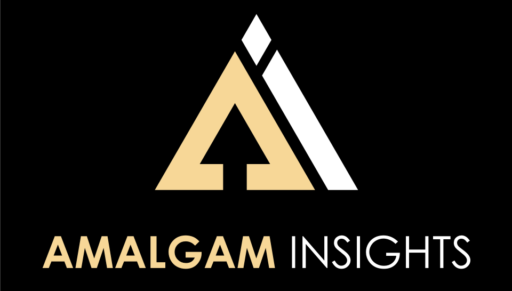Too often, the process of selecting a technology provider — of any kind — unearths more questions than answers. In many instances, vendors’ sales and marketing messages confuse, rather than clarify, because they all sound so similar. This puts IT, procurement, and finance leaders in the frustrating position of trying to identify real differentiators, all while hoping for the best outcomes.
Choosing a cloud computing cost management and optimization vendor offers no exception. As we noted in the third installment in our blog series, most (although not all) of these providers make the same benefits statements to potential customers. So, instead of leaning on hope, Amalgam Insights recommends enterprise buyers use our ongoing guidance to identify important differentiators. We begin by presenting similarities Amalgam Insights has noted in vendor messaging that prove confusing to potential buyers.
4 Areas of Confusing Messaging Among Cloud Cost Management Vendors
Recall that, in the previous blog, we pointed out continuous optimization and automation/artificial intelligence as the first two examples of similarities shared among cloud cost management vendors. The remainder of this installment covers the four additional issues we have pinpointed as challenges for evaluating Cloud FinOps providers. Keeping these aspects in mind will allow executives and line-of-business heads to spot providers’ true differences more easily rather than reinventing the wheel. This will go a long way toward arming organizations with the knowledge needed to develop a vendor selection process that will help narrow down the ideal choice.
1. Container and Service Management
With the emergence of Kubernetes as a mainstream containerization platform, cloud computing can now be deployed more granularly. This makes cost and resource tracking even harder. When a workload is not attached to a specific resource or service, IT has more difficulty assigning it to a project or cost center. Organizations supporting stateless apps need to figure out how to track cloud usage. To meet this challenge, vendors will toss around the buzzphrase “Kubernetes management.” The tracking of containerized compute can be done proactively, optimizing nodes in expectation of workloads or reactive ways that look at the usage. Get insight from the vendor on how they support consumption below the application layer as “container management” is being used in a variety of ways to describe cost, operations, technology, workflow, and/or infrastructure accounting in various ways.
2. Single View of Multiple and Hybrid Clouds
Another commonality among solutions in our Amalgam Insights’ new report, Control Your Cloud: Selecting Cloud Cost Management in the Face of Recession, is that of the single interface. In this report, we focused on cloud cost management and optimization providers that bring together multiple cloud vendors and hybrid cloud resources (e.g., Amazon Web Services, Microsoft Azure, Google Cloud Platform, niche players, private clouds, on-premises hardware) under one roof. Rather than forcing users to access each cloud provider’s interface separately, third-party vendors’ management platforms deliver insight and reporting into each cloud through one portal. This reflects one of the basic benefits of using an independent cloud cost management and optimization platform. A variety of companies in the cloud cost management marketplace are still specialists in one or two cloud platforms. Make sure that your proposed vendor for cloud costs is aligned with your IT architects’ vision for cloud and data center usage.
3. Reporting and Analytics
Every cost management and optimization platform — cloud or not — contains reporting and analytics. The detail to look for is the depth and granularity of analytics, including the out-of-the-box alignment to IT, DevOps, finance, procurement, and other relevant cost and inventory management departments. Analytics can also be supported by algorithmic and machine learning models that help to predict future demand for resources, or that proactively detect potential opportunities for optimization. However, the presence of analytic and reporting capabilities that provide financial and operational visibility into multiple clouds is not in itself a differentiator within the cloud cost management world.
4. Managed and Professional Services
In addition to software, most cloud cost management and optimization vendors offer some level of professional or managed services, as well as help desk. While none of this is unique, the ways in which the services are delivered could be. Organizations will want to vet variances including the following:
- Hours of Operation
- Human vs. automated assistance
- Dedicated or named account resources
- Cloud provider certifications
Some organizations will require around-the-clock support availability while others will not. Some will have no issue using chatbots to resolve problems while others will want a human. Some will operate well with general assistance while others will opt for personnel dedicated to their account. Finally, some cloud cost management and optimization vendors may not certify all their staff on the various cloud platforms the organization uses.
Knowledge Is Power
Knowing what makes many cloud cost management vendors the same will equip IT, procurement, finance, inventory, and other leaders to pinpoint meaningful differentiators and therefore choose an ideal fit. Amalgam Insights has done much of the footwork for readers. In that spirit, the next blog will cover the key differentiators that analysts have identified among providers. From there, we will publish a number of vendor profiles. Combined, all this information will support organizations’ quests to most ably manage their cloud computing environments, especially as a global recession threatens to hit.
Need More Guidance Now?
Check out Amalgam Insights’ new Vendor SmartList report, Control Your Cloud: Selecting Cloud Cost Management in the Face of Recession, available for purchase. If you want to discuss your Cloud Cost Management challenges, please feel free to schedule time with us.
